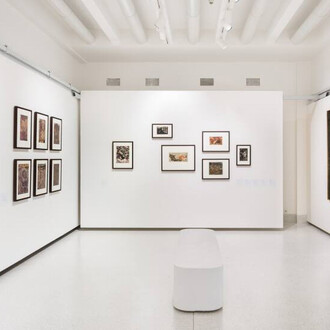Upon graduating from UMPRUM at the studio of František Kysela, Hudeček was unable to further pursue his studies at the Prague Academy for financial reasons, however, his artistic style developed through contact with Toyen and Štyrský, and he also took part in exhibitions at the Theatre of E. F. Burian. From 1941, he regularly joined exhibitions organised by Umělecká beseda (the Czech Artists Forum) as a member of its fine art division.
Another important influence on his development as an artist was Skupina 42 (Group 42), a collective founded on the need to newly articulate the unique perception of everyday situations, emotions and experiences by the urban individual in the constricting atmosphere of the Protectorate era. Ideologically, it took departure from the tradition of Czech inter-war art, and it joined Hudeček’s friends and colleagues whom he had known since the 1930s. Besides visual artists (František Gross, František Hudeček, Kamil Lhoták, Jan Kotík, Jan Smetana, Karel Souček, Bohumír Matal, Ladislav Zívr, Miroslav Hák), the group also included poets (Ivan Blatný, Jiřina Hauková, Josef Kainar, Jiří Kolář, Jan Hanč) and cultural theorists (Jindřich Chalupecký, Jiří Kotalík).
During the 1940s, the character of Hudeček’s work shifted from adapting models toward conceptual originality, spurred by an initiatory experience of hitting upon a unique subject matter – the night-time walker. These were evocations from the meditative and exhilarating nocturnal wandering through the streets of Prague, preceded by drawings of dream visions, memories and metaphysical monuments. Besides employing surrealist techniques such as frottage and ‘cadavre exquis’ collective drawing, Hudeček most frequently made use of pencil, charcoal or pen and ink. He distinctively combined the image of the nocturnal walker in a lightless city over against the background of a glowing universe in a poetic and melancholic vision that he often interlaced with rays of energy. He found a vast number of variants for his walker silhouette, earning him the epithet ‘The Son of Night’ from Jiří Kolář. The figure became his signature, from minimalist simplicity to intricate weaves of lines, from plastic shapes to abstraction. Hudeček also transposed his urge to draw the solitary night-time city walker into graphical form in a number of etches, lithographic prints and drypoints.
















